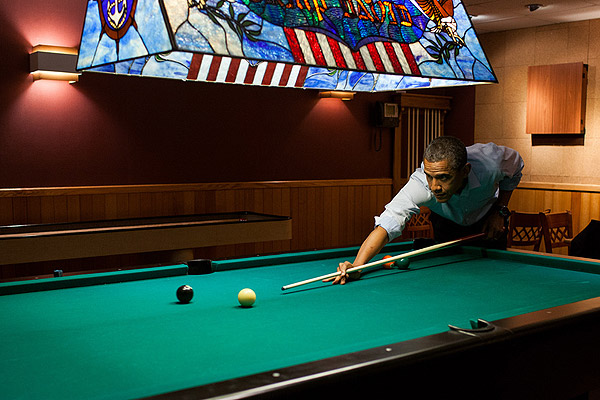
Last week Barack Obama went to Iowa to talk taxes and, presumably, to boost sagging poll numbers in a state he won handily in 2008. We probably won't get to see that much of him, since he'll take his adopted home state easily. Not to worry—Obama has to do a lot of swing state campaigning, and one assumes he'll focus on the most at-risk swing states.
Which are those? Hello, neighbors:
Traditionally Republican North Carolina remains doggedly competitive, and Romney isn’t even contesting New Mexico. At the same time, Obama is well beneath 50 percent in states that he carried by 10 percent or more in 2008, like Iowa, Michigan, and Wisconsin.
Nate Cohn's "The Chart that Explains the Current Electoral Map" is one of Ed Kilgore's "two articles you should read right away" in order to understand the political geography of the next three and a half months, and the rest of the near future. The other is Ronald Brownstein in the National Journal, which takes the trends Cohn finds in nearby swing states and traces them out to the broader electorate. It's surprising:
No one expects Obama to win these blue-collar men, who are now among the most reliably Republican segments of the electorate. But even so, these numbers, if sustained through Election Day, would represent a modern nadir for Democrats. Since 1980, the worst performance for any Democratic nominee among these working-class white men was the 31 percent Walter Mondale managed against Ronald Reagan in 1984; the meager 39 percent Obama drew in 2008 was actually the party's best showing over that period. These new surveys show Obama that these non-college white men represent Obama's largest source of decline in the white electorate since 2008.
Walter Mondale lost so bad that people thought the Democratic Party would never recover the White House (and 12 years is a long run for one party). Obama projects to at least run competitively. What changed? The demographics of the electorate, even more drastically than you might think: "As recently as 1992, non-college whites cast an absolute 53 majority of all votes, and minorities just 12 percent, with college whites contributing the remaining 35 percent. By 2008, minorities had increased to 26 percent and non-college whites fallen sharply to 39 percent of the votes, with college whites holding steady at 35 percent, according to the exit polls."
Ruy Teixeira and William Frey go deeper still into the demographics of the swing states, which explains why Obama was in Iowa—of all the swing states, it's Iowa that, demographically speaking, has had the least Obama-friendly changes in recent years: "And in Iowa, there has been no change at all in the minority share of eligibles, while white working class eligibles increased by a point and white college eligibles decreased by the same amount."
But Romney's business background suggests some vulnerability in the Rust Belt. If it turns into a competition of convincing blue-collar whites that each candidate's opponent is worse for America, the Midwestern campaign season could be nasty, brutal, and short. It may not be a race to the bottom nationwide, however; that most critical driver of demographic trends in the 21st century, the Hispanic electorate, is still in the position of being courted rather than barraged.
Photograph: The White House


